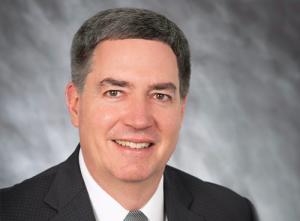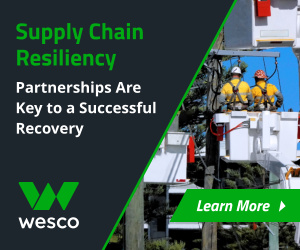State Commissioners
Pat O’Connell is chair of the New Mexico Public Regulation Commission. Paul Kjellander is PUF Senior Advisor and former Idaho PUC Chair.
Ten Commissioners discuss their concerns about electric power infrastructure.

PUF's Paul Kjellander: What are the most important needs for electric power infrastructure in New Mexico?
Chair Pat O'Connell: In the short term, it's getting through the supply chain challenge that came out of the pandemic and the Auxin Commerce Department Complaint. We shut down a coal plant and don't have the replacement resources online yet because of those issues.
We're in this moment when items like transformers are hard to get. That can slow down the change, including the need to address resource adequacy. It also slows down economic development because new loads need transformers too. That's the immediate need, it's equipment.
The longer term is getting to a vision of where New Mexico can sit within the western grid. We've historically supplied electricity to the west through coal, and now are poised to supply electricity to the west through wind.
That requires different systems and getting those built. If everybody's aligned on what we're doing, we can optimize, and get it done affordably and reliably.
PUF: What most concerns you regarding infrastructure?
Chair Pat O'Connell: What we're trying to address is resource adequacy. That ends up being an infrastructure issue because load must be served.
We're building a system with resources that utilities don't have comfort operating yet. So, they're being conservative in assumptions of what they can do.
We might find challenges that we don't imagine yet as we're working through that system. Getting experience with the new stuff, I think, both on the regulatory and utility sides, is important.
PUF: How should utility regulation adjust as you look at some of these infrastructure concerns, if at all?
Chair Pat O'Connell: I've been thinking hard about does regulation need to adjust? It's issues like liquidated damages in power purchase agreements.
If you're trying to minimize what goes on somebody's bill and a utility is negotiating a power supply agreement, what gets thrown out is liquidated damages if things don't come online on time or don't perform right out of the box because the customer pays for that insurance.
The pandemic showed us we could have used some of that insurance. So, is it worth it for regulators to think the least-cost solution may not be the best device for providing service? That's an area where I'm thinking regulation needs to change.
The bigger thing is, especially in New Mexico, we've got state policy. It's about getting it implemented. So, we're working through a slate of new laws and working through it with the utilities.
Regulation is changing in real time in response to those laws. I don't think of that as forward-looking. It's what I'm doing right now.
PUF: Look into the 2040s, what do you see as being different for electric power infrastructure?
Chair Pat O'Connell: Out west, we will have more organized regional markets. Right now, there are deep conversations going on about how best to make that happen, how to ensure the best customer benefits, and concerns about cost allocation.
Those are the kinds of things we're talking about now.
I think down the road we will have answered enough of those questions that a regional market will exist. That can be transformational for a place like New Mexico, where our ability to supply clean energy to the grid versus our demand, can make us a huge supplier.
We will benefit from exporting electricity reliably. That's what I'm looking forward to in forty years, is taking advantage of what we have to benefit New Mexico.
PUF: There will be more costs that need to be recovered to build infrastructure. How will that impact affordability?
Chair Pat O'Connell: Affordability is crucial. We are regulating these services because they are so important to daily life, to running a business. But using the word affordability without digging into what it is, is something that I spend a lot of time thinking about.
If you're talking about electric rate affordability, if you're building new infrastructure, you're probably adding cost. But if you're building new infrastructure to increase sales, your rates might not be changing that much.
Then affordability becomes making sure customers have opportunities to manage their bills. They should have the information to be sophisticated users of electricity, or there should be aggregators who are providing that, while truly looking out for their best interest.
Frequently you'll hear that we have to build new infrastructure, and that makes it not affordable. I don't accept that.
I think that building new infrastructure puts pressure on costs, but it doesn't automatically mean unaffordable. That's the challenge for regulators, is to put these issues together so we're continuing to provide the public benefit of electricity used to power our daily lives, and in a way that's safe, reliable, affordable. Just because things are changing doesn't mean it's not affordable.
Commission articles at fortnightly.com:



